Venereal excesses occasion the most loathsome, and horrible, and calamitous
diseases that human nature is capable of suffering....By far the worst form
of venereal indulgence is self-pollution; or, what is called "Onanism"....I
am confident that I speak within bounds, when I say, that seven out of every
ten boys in this country at the age of twelve, are, at least, acquainted
with this debasing practice: and I say, again; the extent to which it prevails
in our public schools and colleges, is shocking, beyond measure! I have known
boys to leave some of these institutions at the age of twelve and thirteen,
almost entirely ruined in health and constitution, by this destructive practice;
and they have assured me, that, to their certain knowledge, almost every
boy in the school practiced the filthy vice; and many of them went to the
still more loathsome and criminal extent of an unnatural commerce with each
other!
-Sylvester Graham, "A Lecture to Young Men" (1834)
Sylvester Graham's message here was directed toward young
men like Walt Whitman, teenagers in the early 1830s.
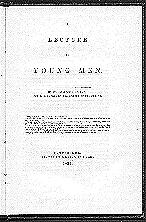 Whitman, in fact, attended the infamous "public
schools" (in Brooklyn between 1825 and 1830) that Graham discusses in the
above passage. Sylvester Graham's condemnation of "venereal" or sexual
excesses--especially in the what he sees as the related forms of masturbation
(referred to as "Onanism") and homosexuality--is one of the first and most
prominent examples of how popular health reformers and others were attempting
to limit and control male sexuality during this period. For Graham (yep,
the Graham cracker is named after him) men were fragile beings whose systems
reacted adversely to any physical stimulation.
Click on the title
page of his "Lecture to Young Men" (on the right) to find out more details
about Graham's representations of men and their bodies.
Whitman, in fact, attended the infamous "public
schools" (in Brooklyn between 1825 and 1830) that Graham discusses in the
above passage. Sylvester Graham's condemnation of "venereal" or sexual
excesses--especially in the what he sees as the related forms of masturbation
(referred to as "Onanism") and homosexuality--is one of the first and most
prominent examples of how popular health reformers and others were attempting
to limit and control male sexuality during this period. For Graham (yep,
the Graham cracker is named after him) men were fragile beings whose systems
reacted adversely to any physical stimulation.
Click on the title
page of his "Lecture to Young Men" (on the right) to find out more details
about Graham's representations of men and their bodies.
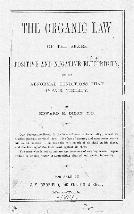 Graham himself was not a doctor, but as the 19th century
progressed many well-respected doctors began to adopt similar views about
the male body and the dangers of too much sexual activity. Articles
against masturbation, for example, began appearing in such prominent medical
journals as the Boston Medical and Surgical Journal and The American
Annals of Education. As Whitman grew older, he cultivated
acquaintances with several of the doctors who were writing on male sexuality,
such as Edward H. Dixon.
Click on the
title page of one of Dixon's pamphlets (on the left), "The Organic Law of
the Sexes: Positive and Negative Electricity and the Abnormal Conditions
that Impair Virility," to find out more details about his relationship to
Whitman.
Graham himself was not a doctor, but as the 19th century
progressed many well-respected doctors began to adopt similar views about
the male body and the dangers of too much sexual activity. Articles
against masturbation, for example, began appearing in such prominent medical
journals as the Boston Medical and Surgical Journal and The American
Annals of Education. As Whitman grew older, he cultivated
acquaintances with several of the doctors who were writing on male sexuality,
such as Edward H. Dixon.
Click on the
title page of one of Dixon's pamphlets (on the left), "The Organic Law of
the Sexes: Positive and Negative Electricity and the Abnormal Conditions
that Impair Virility," to find out more details about his relationship to
Whitman.
Dixon and other doctors, such as Samuel B. Woodward,
R.T. Trall, and Seth Pancoast, detailed the drastic consequences of indulging
in masturbation or other sexual behavior. On one level, these doctors
showed, in very explicit terms, the physical effects of these sexual "diseases"
on the male body. In his book, "Hints for the Young in Relation to
Body and Mind," Woodward writes of boys who engage in the "secret vice":
"The individual becomes feeble, is unable to labor with accustomed vigor,
or to apply his mind to study; his step is tardy and week, his is dull,
irresolute, engages in his sports with less energy than usual, and avoids
social intercourse."
In more dramatic fashion in his book, "Home-Treatment
for Sexual Abuses: A Practical Treatise," Trall claims that "self-pollution"
could produce a "fatal result" and he calls the man who he believes dies
from masturbation a "victim of self-murder." In his book, "Boyhood's
Perils and Manhood's Curse: An Earnest Appeal to the Young of America,"
Pancoast even goes so far as to include illustrations of young men
who have been debilitated by masturbation:
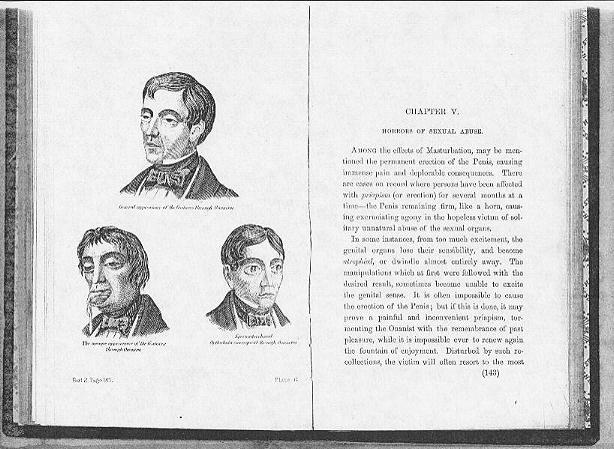
The caption below the top illustration reads: "General appearance of the
features through Onanism." Below the lower left illustration: "The meagre
appearance of the features through Onanism." Below the lower right
illustration: "Spermatorrhacal Opthalmia consequent through Onanism."
These illustrations precede "Chapter V"--which is entitled, "Horrors of Sexual
Abuse."
Significantly, though, these doctors do not show the
effects of these "sexual abuses" simply upon the male body itself; they also
began to connect these seemingly personal problems with the political problems
of a nation at large. For some, like Dr. Pancoast, men's inability
to control their own desires threatened the stability of the country as a
whole. He writes:
The practice of Masturbation is, at once, a violation of the Law of
Nature, or the Law of Life, in the face of common sense and reason. It
is not only a sin against the body, but against the mind--against
that sublime and etherial principle which springs of Heaven itself.
By consequence, it is punished by the severest of afflictions. As
the great physician, Reveille-Parise of France, has well and most
truthfully remarked--'Neither the plague, nor war, nor small-pox, nor similar
diseases, have produced results so disastrous to humanity, as the pernicious
habit of Masturbation: it is they destroying element of civilized societies
which is constantly in action, and gradually undermines the health of 'nations.'
Pancoast illustrates these national consequences with a portrait of "The
Onanists and their Child":
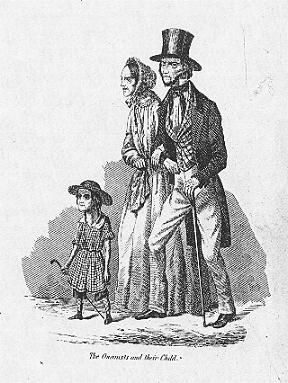
One of the most interesting details of this illustration is the clothing
of each member of the family. The clothing of the father seems to
indicate that he is a member of an aristocratic gentility, but the clothing
of the mother and child appear to be or a lower class. We might ask
the question: what is the connection Pancoast is making between excessive
sexual activity and social standing in the nation?
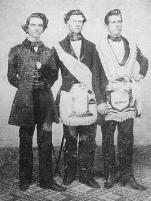 Woodward
and Trall expressed similar anxieties about the state of a country in which
the men indulge in "deviant" sexual behavior. As men began to spend
more time away from the home, health reformers and doctors worried that,
in addition to masturbation, men might also be carrying on sexual relationships
with each other. The emerging "self-made man" in early 19th-century
America was only supposed to be interacting with other men in official
capacities in the business world, but some writers wondered whether they
might also be tempted to indulge in, as Graham puts it, an "unnatural commerce"
with each other. The result of that "unnatural commerce" threatened,
in these writers' minds, the very foundations of the nation. Despite
these anxieties, men, nevertheless, continued to socialize with each
other--albeit in place where male bonding was "safe." The daguerreotype
on the right shows three members of a fraternal organization in 1850.
Around this time fraternal organizations, such as the Masons, began
to see a dramatic increase in membership. Sociologist Michael Kimmel
writes, "With rituals heavily laden with religious symbolism and myth,
fraternalists were devoted to a form of manly nurture. Lodges were
the only place where men would wear aprons or dresses."
Woodward
and Trall expressed similar anxieties about the state of a country in which
the men indulge in "deviant" sexual behavior. As men began to spend
more time away from the home, health reformers and doctors worried that,
in addition to masturbation, men might also be carrying on sexual relationships
with each other. The emerging "self-made man" in early 19th-century
America was only supposed to be interacting with other men in official
capacities in the business world, but some writers wondered whether they
might also be tempted to indulge in, as Graham puts it, an "unnatural commerce"
with each other. The result of that "unnatural commerce" threatened,
in these writers' minds, the very foundations of the nation. Despite
these anxieties, men, nevertheless, continued to socialize with each
other--albeit in place where male bonding was "safe." The daguerreotype
on the right shows three members of a fraternal organization in 1850.
Around this time fraternal organizations, such as the Masons, began
to see a dramatic increase in membership. Sociologist Michael Kimmel
writes, "With rituals heavily laden with religious symbolism and myth,
fraternalists were devoted to a form of manly nurture. Lodges were
the only place where men would wear aprons or dresses."
To learn more about
the views of Woodward, Trall, and Pancoast and the medical representations
of men during this period, click on the title pages of the their books
below:
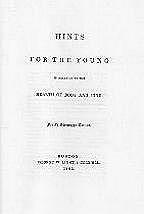
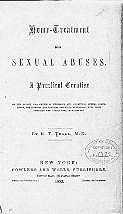
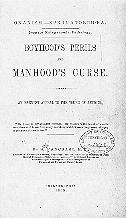
Woodward
Trall
Pancoast
What blurt is this about virtue and vice?
Evil propels me and reform of evil propels me, I stand indifferent,
My gait is no fault-finder's or rejecter's gait,
I moisten the roots of all that has grown.
-Whitman, "Song of Myself" (464-468)
I do not press my fingers across my mouth,
I keep as delicate around the bowels as around the head and
hear,
Copulation is no more rank to me than death is.
-Whitman, "Song of Myself" (519-521)
(Know once for all, avow'd on purpose, wherever are men like me, are
our lusty lurking masculine poems)
-Whitman, "Spontaneous Me" (11)
We can read much of Whitman's poetry as a sometimes
direct, sometimes indirect response to the health reformers, doctors and
others who were attempting to limit and control male sexuality. Whitman,
in many cases, uses the identical vocabulary as the writers we have been
looking at. Words such as "blood," "health," "energy," "virtue," "vice,"
"appetites," "copulation," "lust," "sex," "genitals," "semen," "seminal,"
"disease'd," and "venereal" are, as we have seen, part of the medical discourse
of his time. Does Whitman use these same terms
in a different way, however?. Notice how he plays with some of the
terms in the following verses, sections 1, 22 and 24 of "Song of Myself."
As you are reading these sections, also notice how Whitman is representing
the male body. When Whitman claims in section 24 his own body is
"turbulent, fleshy, sensual, eating, drinking and breeding," how does that
compare with representations we have seen of the male body as a fragile,
closed system?
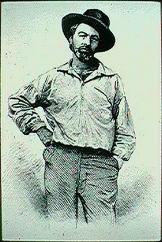
"1": I celebrate myself and sing myself...
"22": You sea! I resign myself to you also--I guess
what you mean...
"24": Walt Whitman, a kosmos, of Manhattan the
son...
Compare also the daguerreotype (an early type of photograph--shown at the
right) that Whitman himself placed on the first edition of Leaves of
Grass, the edition which contained his first version of "Song of Myself."
How does it compare to the illustrations and textual representations
of the male body in the pamphlets and books of the health reformers and doctors
of his time? After all of the sexual activity he describes in the
passages you have just read, does his posture surprise you?
In "Song of Myself" Whitman refers continually
to times when he is touching himself, when other men or women are touching
him, when nature (the "amorous wet" of the "sea" or the "soft-tickling genitals"
of the "wind") is touching him. You might ask yourself, does
any type of sexual activity bother him? Or is he is completely comfortable
and self-confident in his representation of his own body? Read the
following verses from section 28 of "Song of Myself" and from the poem,
"Spontaneous Me" from a later cluster of poems Whitman wrote, "Children of
Adam." How do they compare with the other verses you have read
and to the texts of the health reformers and doctors of his time?
"28": Is this then a touch, quivering me to a new
identity...
"Spontaneous Me"
Finally, read the following poems from the
"Calamus" cluster, a set of poems, like "Children of Adam," that was added
to Leaves of Grass in a later edition. Physical love between
men was seen by Graham and others as "more loathsome" than masturbation;
he even refers to it as "criminal." How is Whitman representing
homosexuality in the following poems? Furthermore, how does his
representation of homosexuality fit into his idea of "democracy" and the
American nation? We have seen how the health reformers and doctors
believed that masturbation and other "excessive" sexual activity threatened
"civilized societies." For Whitman, what place does sexual
activity--particularly homosexuality--have in the nation?
"In Paths Untrodden"
"For You O Democracy"
"When I Heard at the Close of Day"
"I Hear It Was Charged Against Me"
"We Two Boys Clinging Together"
"A Glimpse"
Return to Representations
Return to Main Page